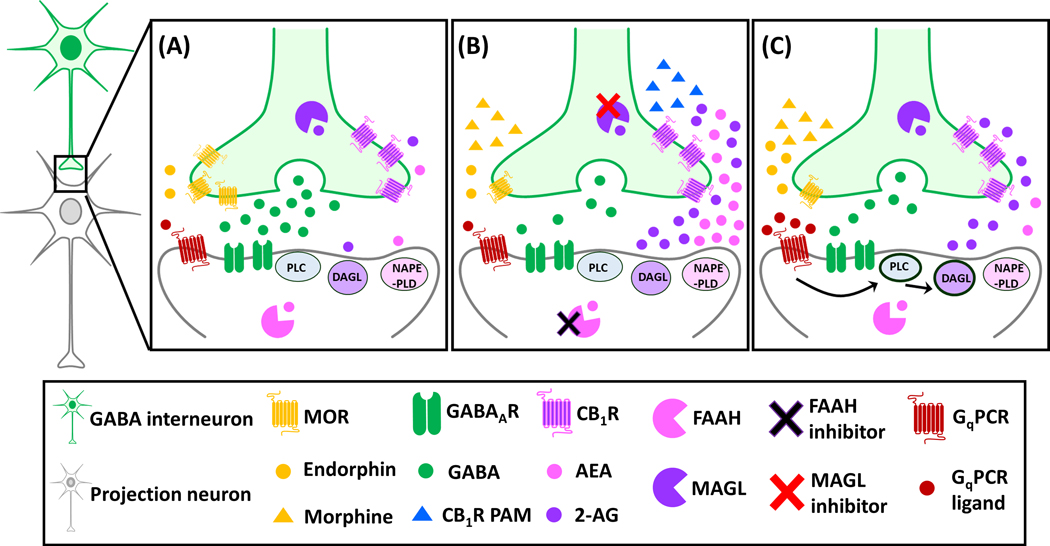Fig. 1. A working model of possible interactions between opioids and endocannabinoids in the periaqueductal gray (PAG) in control (A) and opioid-tolerant conditions during pharmacological (B) and peripheral neuromodulation (C) interventions.
(A) Under control condition, the glutamatergic projection neuron (grey neuron) in the PAG receives GABA (green circles) inhibitory transmission via GABAA receptors (green receptors). The inhibition of GABA release from the presynaptic GABA interneuron (green neuron) (disinhibition) can be achieved via presynaptic activation of either μ-opioid receptors (MORs, yellow receptors) by endorphins (yellow circles) or CB1 receptors (CB1Rs, pinkish-purple receptors) by endocannabinoids (eCBs), i.e., 2-arachidonoylglycerol (2-AG, purple circles) or anandamide (AEA, pink circles). The levels of 2-AG and AEA are regulated by their respective degradation enzymes, monoacylglycerol lipase (MAGL, purple circular sectors in the presynaptic GABAergic terminal) or fatty acid amide hydrolase (FAAH, pink circular sectors in the postsynaptic neuron). (B) During opioid-tolerant conditions, the expression of MORs on GABA interneurons is downregulated due to repeated treatments with exogenous opioids, e.g., morphine (yellow triangles), leading to a reduced inhibition of GABAergic transmission by opioids, i.e., reduced disinhibition. This reduction of disinhibition on the postsynaptic glutamatergic projection neuron can possibly be restored by pharmacological inactivation of eCB degradation enzymes with an MAGL inhibitor (red cross) and/or an FAAH inhibitor (black cross), or by a CB1R positive allosteric modulator (PAM). (C) On the other hand, the reduction of disinhibition on the postsynaptic projection neuron during opioid-tolerant conditions can also be achieved via peripheral neuromodulation through an opioid-independent and cannabinoid-dependent mechanism. That is, electrostimulation at peripheral nerves, e.g., the median nerve, can lead to activation of the Gq protein-coupled receptors (GqPCRs) by increasing the release of GqPCR ligands (e.g., orexins or glutamate) in the PAG. Via the phospholipase C (PLC)-diacylglycerol lipase (DAGL) pathway, 2-AG can be synthesized and produce retrograde inhibition of GABA release via presynaptic CB1Rs. The images of neurons, ligands and receptors are adapted from Illustration Toolkit Neuroscience by Motifolio.

